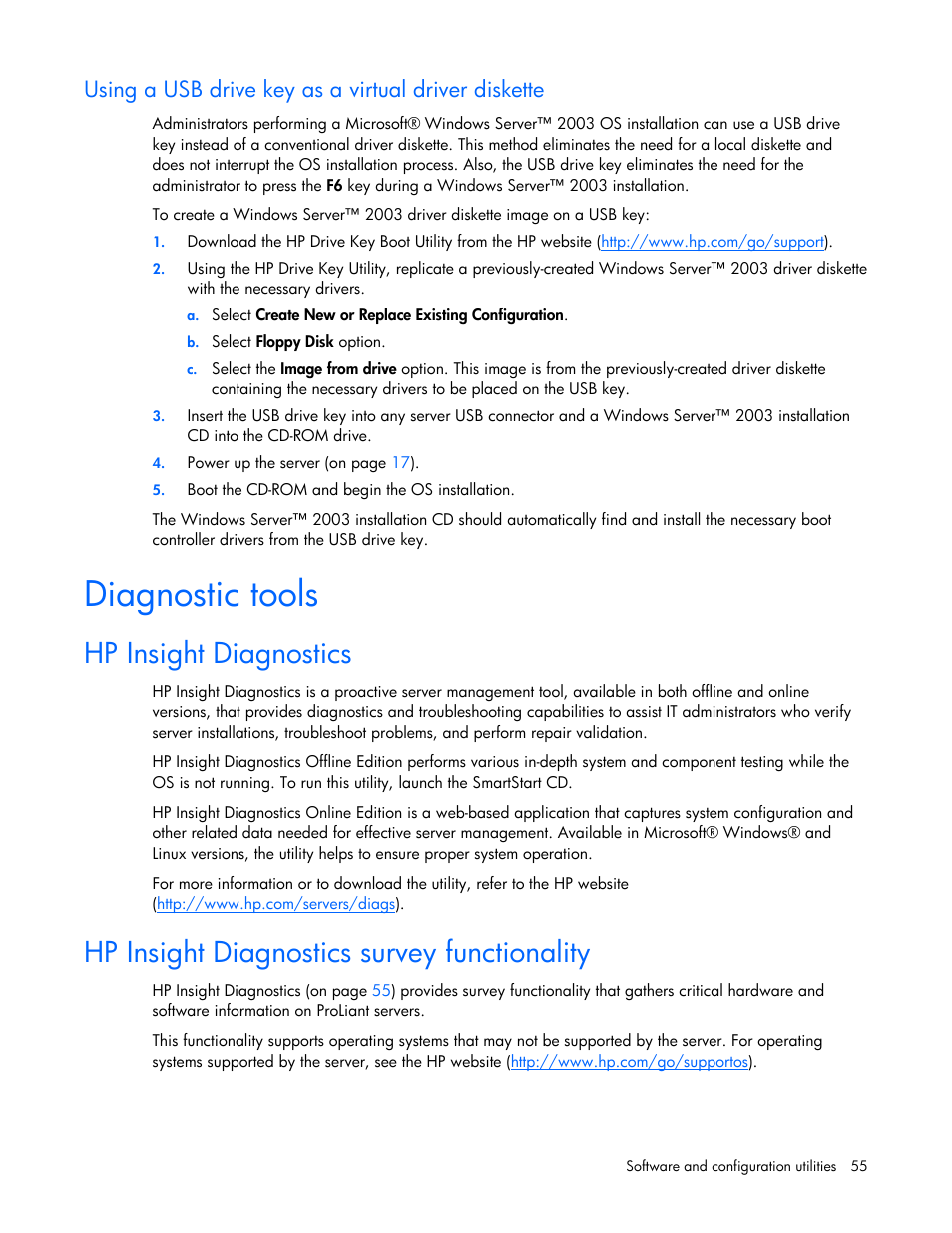Hp Insight Diagnostic

Tips for better search results • Ensure correct spelling and spacing - Examples: 'paper jam' • Use product model name: - Examples: laserjet pro p1102, DeskJet 2130 • For HP products a product number. - Examples: LG534UA • For Samsung Print products, enter the M/C or Model Code found on the product label. - Examples: “SL-M2020W/XAA” • Include keywords along with product name. Examples: 'LaserJet Pro P1102 paper jam', 'EliteBook 840 G3 bios update' Need help finding your product name or product number?
The HP PC Hardware Diagnostics application is a comprehensive set of tests to help you identify, isolate, and diagnose possible hardware.
So, I'll pose another question: Why is it necessary to run HP Insight hardware diagnostics on servers prior to provisioning? In my comment above, I indicated that there's little to gain by doing this preemptively in large HP ProLiant environments.
I should clarify my thoughts on that. In order of descending frequency, let's look at the types of issues you'll typically encounter: • Storage array and disks: The RAID controller will report to the OS, logs, SNMP, email, ILO and to indicate health. • RAM: The POST process will detect RAM status, as well as the system reporting to the OS, logs, SNMP, email, ILO and lighting up an LED indicator on the front panel. Also, I'm not a fan of because the error detection of these systems is already robust. • Thermal and fans: Server temperature and fan speed are regulated by the ILO. Epson Printer Adjustment Program R230. , so the cooling system is extremely efficient.
This still reports to the OS, logs, SNMP, email and on the SID. • Power Supply: PSU status is reported to the OS, logs, SNMP, email and on the SID, as well as an actual indicator light on the actual power supply unit. • Overall health: This is easy to assess from a glance with the SID display, in addition to the Internal Health and External Health LED. Epson Stylus Tx300f User Guide. This is also reported to the server's logs, SNMP, email and ILO. Canon 7080c Drivers. I can't think of any conditions that would be found pre-deployment that wouldn't/couldn't be reported during runtime or post OS install.
The diagnostics loop usually won't find anything when run on a system with no obvious prior issues. This is mainly because the server needs to POST and boot into the utility or Intelligent Provisioning firmware in order to run the utility. Aplikasi Sistem Pakar Dengan Php Explode. Put another way, any item that would be a serious 'SPOF' for the server would probably prevent the system from running its self-diagnostics. The most common failure items are still fairly robust; disks should be in RAID and are hot-swappable. Fans and power supplies are also hot-swappable.
Your RAM has ECC thresholds and there are online spare options for most ProLiant platforms. There's nothing you'll be able to do to induce failure in these components by running diagnostics. Add the fact that you're using, and your incidence of failure should be pretty low.
The problem is if (a) fault is detected post OS install (i.e. Server is in production), (b) repair cannot be done online or the failed component is a SPOF for the server, and (c) server is a SPOF, then you will experience downtime (either immediately or when system is taken down to repair). To prevent the conclusion you need to prevent one of the conditions. I was going for (a) by detecting the fault before production. I appreciate your thoroughness in detailing the reporting abilities but I'm looking to prevent the need to report them in the first place because they don't happen.